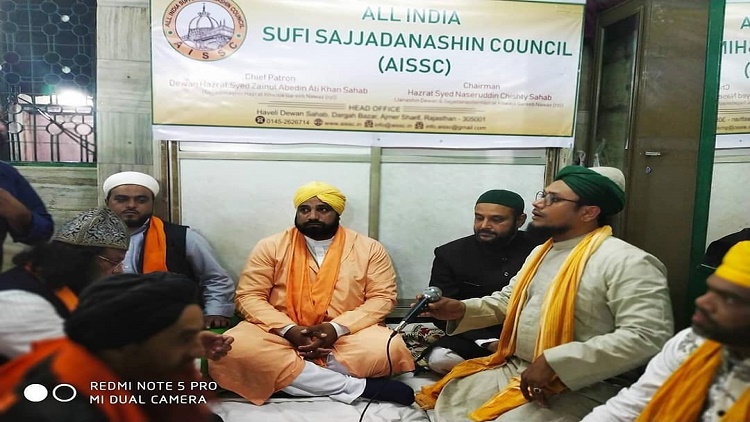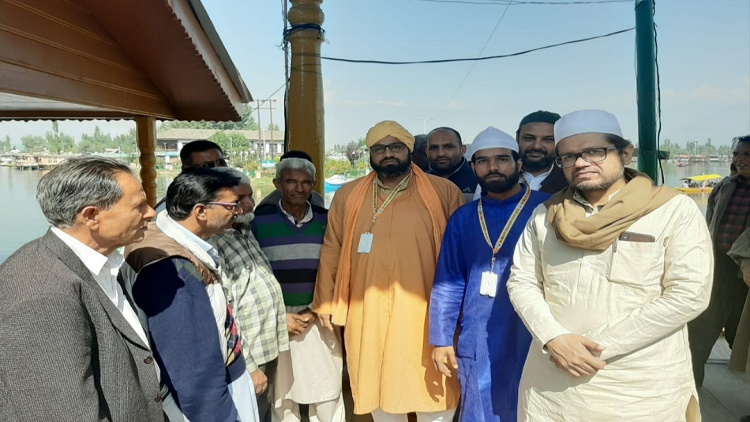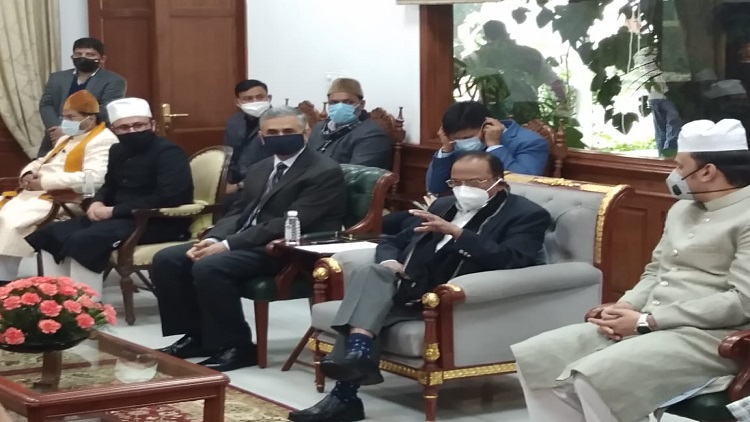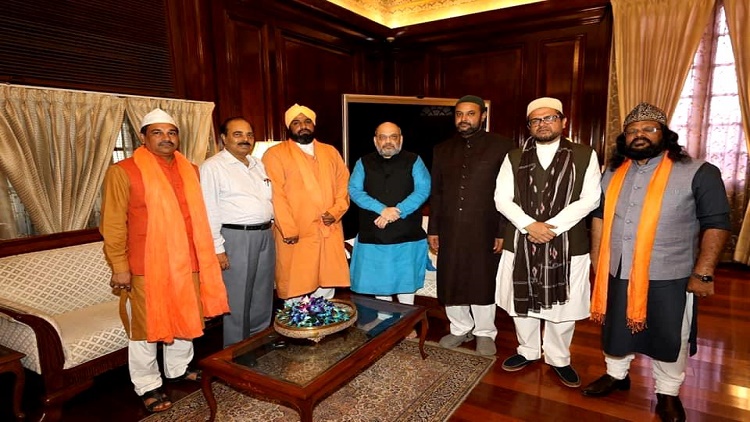
Sufism can become an antidote to the menace of growing radicalism among the Muslim youth of India, says Syed Naseruddin Chishty, descendent of Khawaja Moinuddin Chisthy, whose mausoleum in Ajmer, Rajasthan, is the most revered of the 300 shrines of Sufis in the Indian sub-continent. He is also the chairman of the All India Sufi Sajjadanashin Council, a conglomerate of caretakers of Sufi shrines.
Naseeruddin told Malick Asghar Hashmi, editor, Hindi, Awaz the Voice, that government should involve the Sufi shrines in promoting national unity. He also proposed that a body comprising clerics associated with all Dargahs and other religious leaders should be formed and entrusted with the responsibility of intervening in the situations that require restoration of peace and amity. Excerpts from the interview:
It seems the young men are being lured by the extremist and fundamentalist forces. How can they get reconnected with Sufi traditions and thought?
It’s indeed a big challenge. Surely, there is an urgent need for connecting the youth to Sufism. For that, we are planning to launch a nationwide campaign. We will apprise our youth of the message and traditions of Sufis and ask them to stay away from fundamentalist organisations. Also, the Muslims must reflect on how after the Prophet (PBUH) Hazrat Ali, Imam Hassan and Imam Hussein were martyred; no non-Muslim was involved; the killers were among the Muslims, our people. People who believe in the Quran can never harm a fellow human being. It’s said that one murder is the murder of whole humanity. We can follow the basic fundamentals of Islam while treading on the path shown by the great Sufis. We are working on this. A blueprint for reaching out to the youth is ready for the Kashmir to Kanyakumari campaign. I would personally visit each state to connect with the youth and raise voice against fundamentalism.

Syed Naseruddin Chishty interacting with people in Kashmir
Normally, Hindus go to temples and Muslims to mosques; however, both visit a Dargah. That way a Dargah is an inclusive religious place and promotes harmony and yet some elements oppose this. How can we counter such forces?
We have to stand against the ‘Tablighi’ and other anti-national organisations. Only after we take a firm stand against those who speak against dargahs they would lose their appeal. I appeal to the youth and their parents not to become captives of social media. All of us must verify its authenticity before sharing a potentially provocative post; be sensitive towards others feelings while sharing a post. We will also become active on social media to propagate our message and raise our voice against the fundamentalist organisation of all religions. These outfits are exploiting youth emotionally using religion; they are the enemies of youth. At their end, our youth must exercise caution before getting associated with any organisation. They must check its antecedents and mission before joining it. There is a risk; what is the organisation gets banned, their future will be in jeopardy.

NSA Ajit Doval meeting a delegation of AISSC (All India sufi Sajjadanashin Council) in Delhi
The Dargah of Khawaja Gareeb Nawaz is revered by people of all faiths. Therefore, the responsibilities of those in charge also are manifold.
I belong to the family of Khwaja Moinuddin Chisti and my father is the caretaker of the dargah. This place is the strongest pillar of India’s inclusive civilisation. Both Hindus and Muslims pay their obeisance to the greatest Sufi Saint there. Also, Ajmer Sharif is the biggest centre of Sufism. I strongly believe that platform of Sufi dargahs can be used to blunt the hate campaigns and for spreading the message of love and brotherhood. Since people of all faiths visit these places, the positive message from there can reach all. Religions should not be at odds with each other; these should rather co-exist. When Khwaja Garib Nawaz came to India (from Iran) he adapted to India’s culture and won over the locals through his love and conduct. That is the reason why Islam did not spread in India through the sword; it spread through love. All the Caliphs like Hazrat Farid Bakhtiar Kaki, (whose dargah is in Delhi), Nizamuddin Auliya and Baba, etc. followed his message and the ways. The message of love continues to emanate from dargahs as does the system of langar. Food is served to all the visitors; nobody is asked about his religion.

Syed Naseruddin and members of AISSC meeting Home Minister Amit Shah
Dr APJ Abdul Kalam had once tried to create a platform of all caretakers of Sufi shrines to push the agenda of national unity and amity. What happened to his idea?
Unfortunately, this idea was not followed up. The harsh reality is that the dargahs have lost their pre-1947 eminence. To change this, I have constituted the Sajjidanashin Council that has representatives of more than 300 dargahs. The council takes cognizance of the issues faced by dargahs and their caretakers but more importantly, this platform will be used as the voice of Sufis. I also appeal to the government to make guidelines for the identification of real Sufis so that the fake ones can be weeded out.
What role Dargah and their caretakers (Sajjadanashin) have played in promoting national unity?
Peace is imperative for progress and growth of any country; a peaceful environment, brotherhood and unity will strengthen its foundations. The world has moved ahead and progressed and here we in India continue to be obsessed with issues of religion and caste. The nation will progress only when we end our mutual differences. Dargahs can play a role in this since people of all religions visit these. We have a common kitchen where only vegetarian food is cooked so that people of all faiths can partake it. The unity among people will lead to peace and with that the government would no longer have to waste its energy and resources in sorting out the difference. (to be continued)
